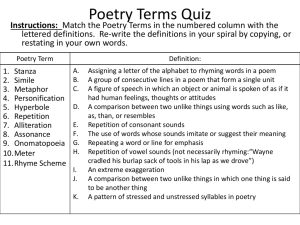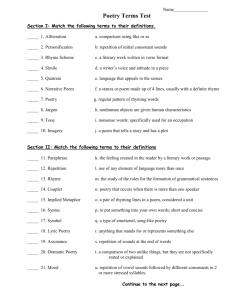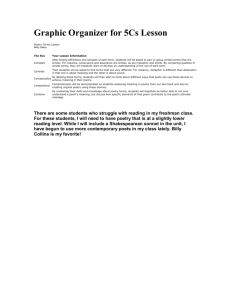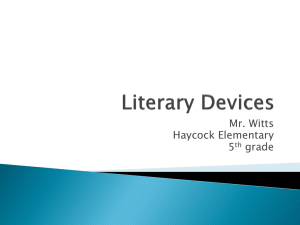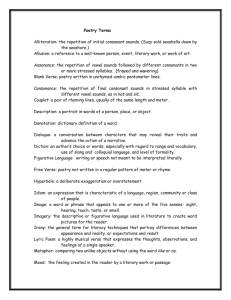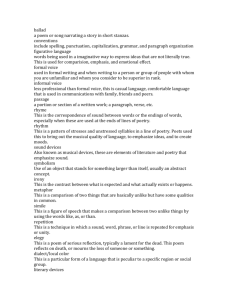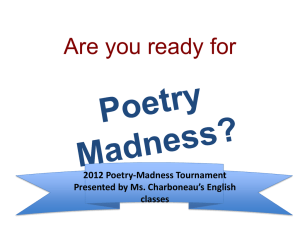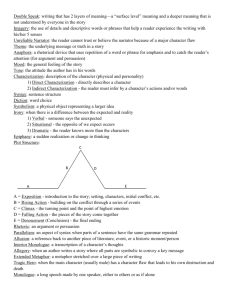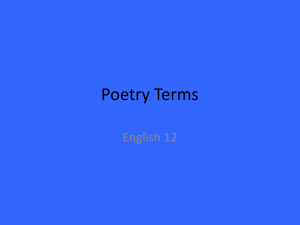Poetry Terms - World of Teaching
advertisement
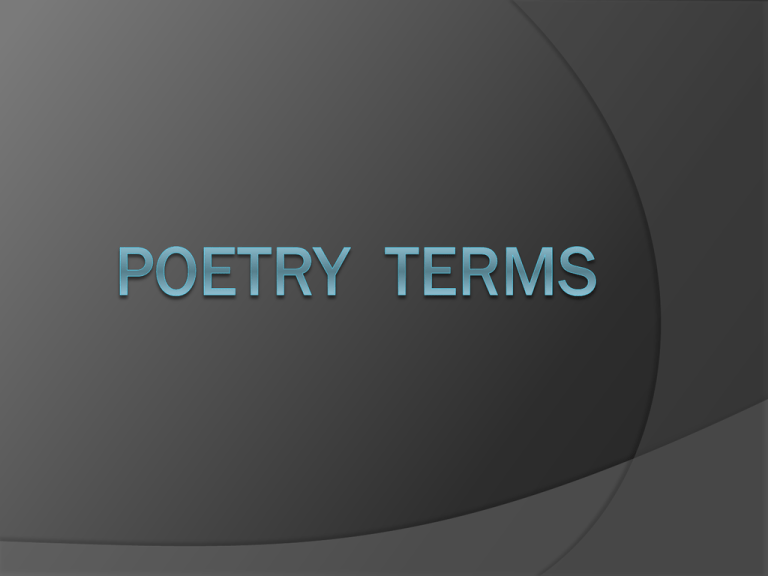
Lyric Poetry a small poem that displays the thoughts and feelings of the poet. Myth a traditional poem that tells a historic story or a popular belief; often deals with heroes, the supernatural, or ancestors Rhythm a patterned flow of sound Epithet descriptive term used to characterize a person or a thing Imagery Word or group of words which appeal to one or more of the senses: sight, taste, touch, hearing, and smell. Implied Metaphor Uses words to suggest the comparison such as love “bursts into bloom.” It does not directly state the comparison. Epic a story poem that often celebrates a hero or legend (Odysseus or Hercules) Onomatopoeia words that are pronounced to imitate their sounds (buzz, fizz, click, zoom, chirp). Symbolism Stands for itself and for something beyond itself as well. (The bald eagle symbolizes the United States.) Alliteration The repetition of the same consonant sounds in a line of poetry. (seven silver swans swam”) Rhyme The similarity of ending sounds existing in lines of poetry. Internal: rhyme within the line of poetry. End: rhyme at the end of a line of poetry. Assonance the repetition of identical or similar vowel sounds, especially in stressed syllables Personification providing human characteristics to a lifeless object. (“This poetry gets bored of being alone, it wants to go outdoors to chew on the winds.” “Living Poetry” by Hugo Margenat Extended Metaphor Metaphor that is developed over several lines of writing or throughout the poem. Simile figure of speech that expresses the comparison of two objects using like or as (as snug as a bug in a rug) Connotation/Denotation Connotation: attitudes and feelings associated with a word. (thrifty vs. stingy) Denotation: the dictionary definition of a word (literal meaning) Metaphor figure of speech that expresses the comparison of two objects without using like or as Iambic Pentameter A line of poetry that contains five iambs. “But soft! What light through yonder window breaks. Oxymoron a combination of terms that appears to contradict one another. “jumbo shrimp; stupid genius; small crowd) Figurative Language Strategies that authors use to use literary devices such as metaphors, simile, repetition, etc. Place your own example.
